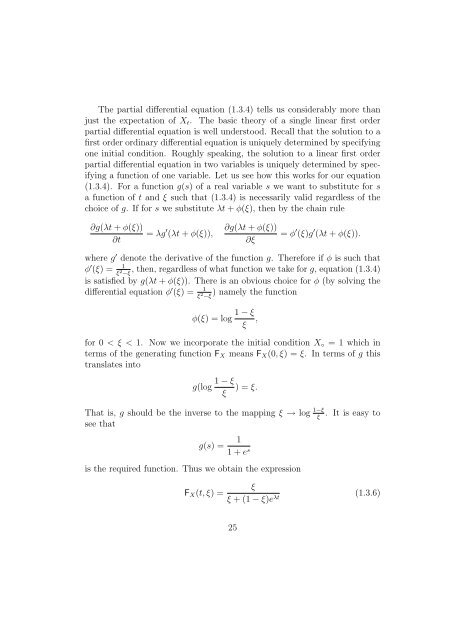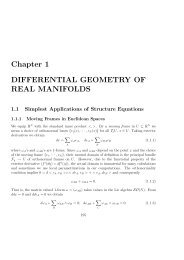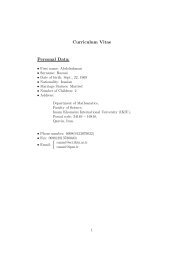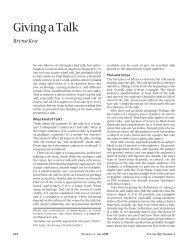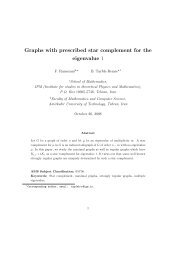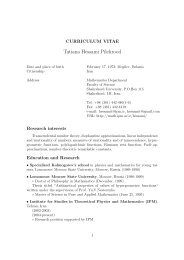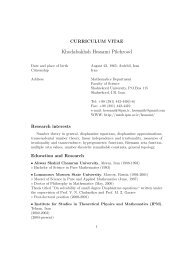1 Continuous Time Processes - IPM
1 Continuous Time Processes - IPM
1 Continuous Time Processes - IPM
You also want an ePaper? Increase the reach of your titles
YUMPU automatically turns print PDFs into web optimized ePapers that Google loves.
The partial differential equation (1.3.4) tells us considerably more than<br />
just the expectation of Xt. The basic theory of a single linear first order<br />
partial differential equation is well understood. Recall that the solution to a<br />
first order ordinary differential equation is uniquely determined by specifying<br />
one initial condition. Roughly speaking, the solution to a linear first order<br />
partial differential equation in two variables is uniquely determined by specifying<br />
a function of one variable. Let us see how this works for our equation<br />
(1.3.4). For a function g(s) of a real variable s we want to substitute for s<br />
a function of t and ξ such that (1.3.4) is necessarily valid regardless of the<br />
choice of g. If for s we substitute λt + φ(ξ), then by the chain rule<br />
∂g(λt + φ(ξ))<br />
∂t<br />
= λg ′ (λt + φ(ξ)),<br />
∂g(λt + φ(ξ))<br />
∂ξ<br />
= φ ′ (ξ)g ′ (λt + φ(ξ)).<br />
where g ′ denote the derivative of the function g. Therefore if φ is such that<br />
φ ′ (ξ) = 1<br />
ξ2 , then, regardless of what function we take for g, equation (1.3.4)<br />
−ξ<br />
is satisfied by g(λt + φ(ξ)). There is an obvious choice for φ (by solving the<br />
) namely the function<br />
differential equation φ ′ (ξ) = 1<br />
ξ 2 −ξ<br />
φ(ξ) = log<br />
1 − ξ<br />
,<br />
ξ<br />
for 0 < ξ < 1. Now we incorporate the initial condition X◦ = 1 which in<br />
terms of the generating function FX means FX(0, ξ) = ξ. In terms of g this<br />
translates into<br />
g(log<br />
1 − ξ<br />
) = ξ.<br />
ξ<br />
That is, g should be the inverse to the mapping ξ → log 1−ξ<br />
. It is easy to<br />
ξ<br />
see that<br />
g(s) = 1<br />
1 + e s<br />
is the required function. Thus we obtain the expression<br />
FX(t, ξ) =<br />
ξ<br />
ξ + (1 − ξ)e λt<br />
25<br />
(1.3.6)


